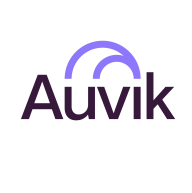

Elastic Observability and Auvik Network Management compete in the network monitoring and observability category. Auvik seems to have the upper hand with its strong network discovery and ease of deployment, which may appeal more to users looking for simplicity.
Features: Elastic Observability offers comprehensive logging, monitoring, and SIEM with a licensing model based on the number of hosts. It is suitable for large setups due to a rich feature set. Auvik Network Management shines in network discovery, auto-mapping, and alerting, combined with robust monitoring capabilities. It is praised for its remote access and configuration backup features.
Room for Improvement: Elastic Observability requires enhancements in visualization with improvements in synthetic monitoring and process metrics. Users are looking for better automation and enhanced APM capabilities. Auvik Network Management needs improvements in reporting, lacking custom reporting capabilities and integration with certain network devices. Users want enhanced map customization and integration with existing tools.
Ease of Deployment and Customer Service: Elastic Observability supports a hybrid model with robust documentation and technical support, especially for platinum-level customers. Auvik Network Management primarily deploys on Public Cloud, praised for its intuitive interface and excellent customer support.
Pricing and ROI: Elastic Observability is cost-effective due to its open-source version and affordable compared to Dynatrace and New Relic, though pricing might be a concern for smaller startups. Auvik Network Management's per-device pricing is seen as expensive but justified by its features. The pricing primarily affects larger networks due to the billing model, which might outweigh its benefits for some users.
Auvik Network Management has definitely helped reduce business disruptions related to network issues.
Auvik Network Management saves me 40% to 50% of our time.
If the network goes down, Auvik Network Management (ANM) opens a ticket, and then we begin working on it.
They were knowledgeable and responded quickly with accurate and useful information.
They introduced the product to us and explained how to deal with it.
I would give Auvik Network Management support a ten out of ten.
Elastic support really struggles in complex situations to resolve issues.
The platform scales well and supports our organizational needs.
It was capable of handling all those clients perfectly.
We keep adding sites into Auvik Network Management, and it doesn't seem to affect performance or anything on our end.
Elastic Observability seems to have a good scale-out capability.
Elastic Observability is easy in deployment in general for small scale, but when you deploy it at a really large scale, the complexity comes with the customizations.
What is not scalable for us is not on Elastic's side.
A lot of platforms, especially when it comes to CRMs, CMSs, and ERPs, are still built on PHP and MySQL, which I feel is archaic now and slow to query.
In terms of stability, I would rate Auvik Network Management as a ten out of ten, as it does not experience jitter or other major issues.
Auvik's automated reporting system also details interferences or any lagging other than outside interference from electrical sources.
There are some bugs that come with each release, but they are keen always to build major versions and minor versions on time, including the CVE vulnerabilities to fix it.
It is very stable, and I would rate it ten out of ten based on my interaction with it.
Elastic Observability is really stable.
We were unable to integrate Auvik with a geographical map, which limited our ability to track issues to specific buildings on campus.
Enhancements in API functionality and wider tool support for integration with PSA or RMM tools.
Auvik does a good job of nesting those devices. For example, a bunch of different servers will all be nested in one icon on the map, and when opened up, all those multiple servers can be seen.
For instance, if you have many error logs and want to create a rule with a custom query, such as triggering an alert for five errors in the last hour, all you need to do is open the AI bot, type this question, and it generates an Elastic query for you to use in your alert rules.
It lacked some capabilities when handling on-prem devices, like network observability, package flow analysis, and device performance data on the infrastructure side.
Some areas such as AI Ops still require data scientists to understand machine learning and AI, and it doesn't have a quick win with no-brainer use cases.
Auvik is pricey, and we were paying a lot for it, especially when compared to SolarWinds.
The pricing for Auvik Network Management (ANM) is great; it is comparable to other solutions, and for what it does, it actually provides more value for the money than some of the other major competitors.
Auvik Network Management (ANM) pricing or licensing is about 2,500 per year for approximately 4,000 endpoints, which is quite reasonable.
The license is reasonably priced, however, the VMs where we host the solution are extremely expensive, making the overall cost in the public cloud high.
Elastic Observability is cost-efficient and provides all features in the enterprise license without asset-based licensing.
Observability is actually cheaper compared to logs because you're not indexing huge blobs of text and trying to parse those.
Auvik Core's ease of use also enhanced troubleshooting speed and efficiency.
Its proactive monitoring and simplified troubleshooting have significantly impacted our efficiency in handling network management tasks.
We can go to different places and monitor, check, configure, and analyze traffic.
The most valuable feature is the integrated platform that allows customers to start from observability and expand into other areas like security, EDR solutions, etc.
the most valued feature of Elastic is its log analytics capabilities.
All the features that we use, such as monitoring, dashboarding, reporting, the possibility of alerting, and the way we index the data, are important.
| Product | Market Share (%) |
|---|---|
| Auvik Network Management (ANM) | 0.8% |
| Elastic Observability | 2.9% |
| Other | 96.3% |


| Company Size | Count |
|---|---|
| Small Business | 140 |
| Midsize Enterprise | 31 |
| Large Enterprise | 21 |
| Company Size | Count |
|---|---|
| Small Business | 8 |
| Midsize Enterprise | 4 |
| Large Enterprise | 16 |
Auvik Network Management provides comprehensive network monitoring with competitive pricing, offering advanced features and free management of non-critical devices.
Auvik Network Management is known for its intuitive interface and real-time network visibility. Users benefit from features like automated network discovery, mapping, alerting, and TrafficInsights for cost-effective bandwidth monitoring. Its integration with ConnectWise and ticketing systems enhances device inventory updates, SNMP monitoring, and network troubleshooting. However, improvements are needed in reporting, integration capabilities, network map accuracy, customization, and alert configuration. Users suggest expanding device support and improving navigation and monitoring features.
What are Auvik's most important features?Auvik Network Management is widely used by managed service providers and enterprises for network monitoring across industries. It enables efficient management of firewalls, switches, routers, and ensures connectivity over multiple locations. This solution aids in identifying issues, automating backups, and facilitating remote access, offering critical insights on network traffic and device performance. Companies leverage its features to enhance network management and performance.
Elastic Observability offers a comprehensive suite for log analytics, application performance monitoring, and machine learning. It integrates seamlessly with platforms like Teams and Slack, enhancing data visualization and scalability for real-time insights.
Elastic Observability is designed to support production environments with features like logging, data collection, and infrastructure tracking. Centralized logging and powerful search functionalities make incident response and performance tracking efficient. Elastic APM and Kibana facilitate detailed data visualization, promoting rapid troubleshooting and effective system performance analysis. Integrated services and extensive connectivity options enhance its role in business and technical decision-making by providing actionable data insights.
What are the most important features of Elastic Observability?Elastic Observability is employed across industries for critical operations, such as in finance for transaction monitoring, in healthcare for secure data management, and in technology for optimizing application performance. Its data-driven approach aids efficient event tracing, supporting diverse industry requirements.
We monitor all IT Infrastructure Monitoring reviews to prevent fraudulent reviews and keep review quality high. We do not post reviews by company employees or direct competitors. We validate each review for authenticity via cross-reference with LinkedIn, and personal follow-up with the reviewer when necessary.